MFA Thesis Exhibition, Grounding, In Touch / Inland Waters II by Brittany Reitzel and Sam Neal
Brittany Reitzel is currently an MFA candidate at UBCO whose primary interests are grounding practices, forest bathing and site-specific expanded painting practices. She graduated from Brock University in 2016 with a BFA (Honours). In her current practice she works at the intersection of painting, ceramics and performance. She positions herself as a settler and long-term visitor on unceded Syilx territory, where she is interested in the boundaries of our human bodies in relation to the land. Her work posits a tactile unlearning of settler values and attitudes when working with and on the land.
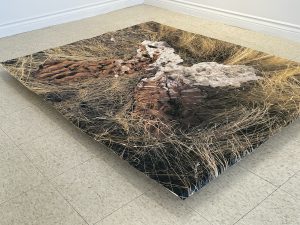
Grounding, In Touch is a body of work that documents my process of grounding myself through creating site-specific artwork on the unceded traditional lands of the Syilx nation. As a settler I work directly on and with the land to open my body to ‘touch’ and be ‘touched’ by the land and provide a direct translation of the sensations I feel. I create works bare-foot and trade my paint brushes for my hands and other body parts, relating to the mindfulness theory of ‘grounding’, whereby is a process which our bodies “electrically reconnect to the earth when our skin is in direct contact with it”.
Like the permeable boundary of body, the canvas and clay are places of ‘encounter and transformation’. Through clay I am able to explore the softness of material, the absence and presence of the body and the movement from matter to object. The growth and decay of nature and the body’s natural cycles are my inspiration. Using my hands as the primary tool to create, the work reveals the material’s relations to my body and its movements. The hand is exaggerated in my work leaving pinches, mini recesses and fingerprints. With my hand emphasized, connections are made to the process and the resulting final form reveals its own creation.
The work talks to my role in that creation and bears vulnerability to the presence of my own body. It comments on the interface of myself and other natural forms. Prying open raw material as grounds to discover the interwoven relationship between my body and other natural phenomena. Like a flower in bloom the sculptures reveal the gradual opening up between myself, the material and the land. Recording the stages of growth and transformation as I become further attuned to the Okanagan valley.
Sam Neal is currently studying for his MFA in Visual Arts at the University of British Columbia Okanagan campus. His most recent work utilizes cyanotype, a photographic process, to create a collaboration between the artist and the environment. He accepted the Graduate Scholarship Award in 2020 and has been a teaching assistant in photography since 2019. He is also a research assistant for Living with Wildfire, a project funded by the New Frontiers in Research Fund. Neal has exhibited most recently at The Alternator Centre for Contemporary Art. He also exhibited for the Spring Festival of the Arts 2021, which featured a video installation at the Rotary Centre for the Arts.
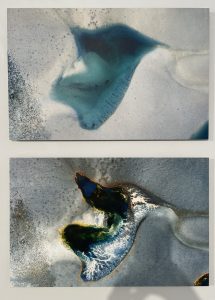 Inland Waters II is an exploration of time, place and process. Using cyanotype chemicals, a photographic process discovered in 1842, I brush large pieces of paper that become sensitive to UV light once dry. Each of the works is created in collaboration with a body of water. I have been drawn to how water can appear to change color when light moves across it, how we can see water’s surface and its depths and how it reflects and refracts to create caustics. I carry the sensitized paper to the water and let the water impact or flow over it. The paper is then left to expose and dry at the site in which it is created. The connection between the overlapping of water, light and my engagement with the process explores a performative relationship with nature that can be visualized as a direct mapping of a place.
Inland Waters II is an exploration of time, place and process. Using cyanotype chemicals, a photographic process discovered in 1842, I brush large pieces of paper that become sensitive to UV light once dry. Each of the works is created in collaboration with a body of water. I have been drawn to how water can appear to change color when light moves across it, how we can see water’s surface and its depths and how it reflects and refracts to create caustics. I carry the sensitized paper to the water and let the water impact or flow over it. The paper is then left to expose and dry at the site in which it is created. The connection between the overlapping of water, light and my engagement with the process explores a performative relationship with nature that can be visualized as a direct mapping of a place.
Inland Waters II features detailed prints that incorporate digital and screen printmaking, alongside the original cyanotypes. The prints depict the reaction between chemicals, water and light on the paper’s surface during the initial contact with water and after it oxidizes in the following days.
Each body of water acts as a potential threat to the land around it through processes such as shoreline erosion, flooding and other forms of environmental degradation. The cyanotypes in this space are left unfixed, and they retain sediment that is carried along with these bodies of water. They are impermanent objects that are susceptible to growth and decay.
Fixing a cyanotype would require me to thoroughly wash the material and let it dry to its final state. By leaving them unfixed, sediment, algae, and other deposits that reacted with the chemicals remain on the paper’s fibre. The sediment and any other organic material can grow, fall off or stay in place. Ultimately, each piece is a living object within an interior space, reflecting its original environment.

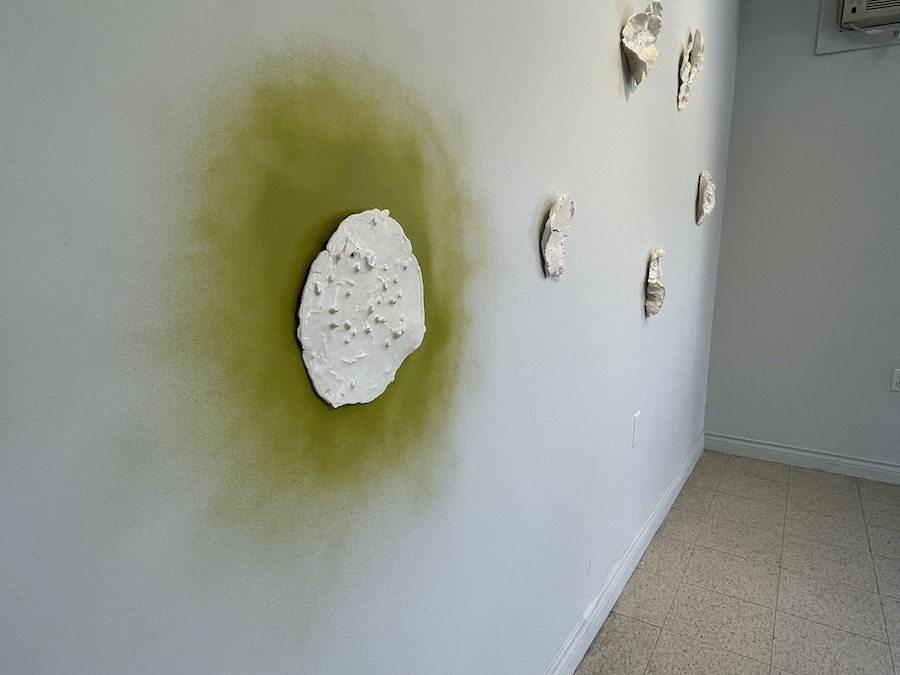



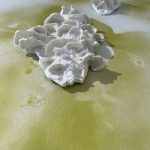
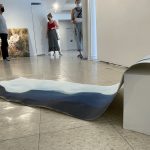
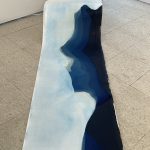
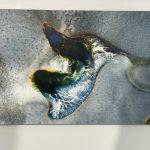
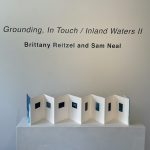

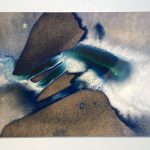

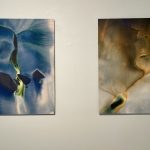
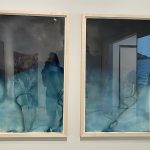
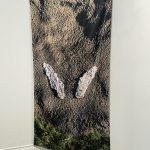
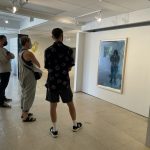
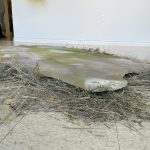
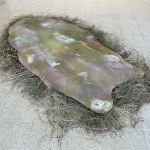
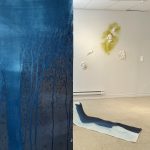


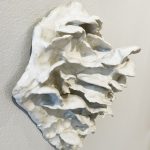
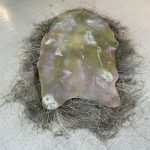
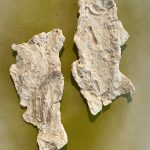
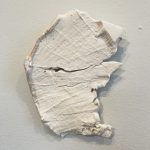
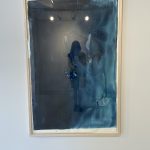


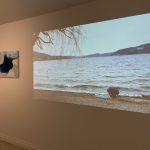

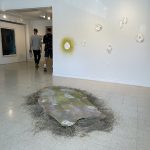
 Follow
Follow